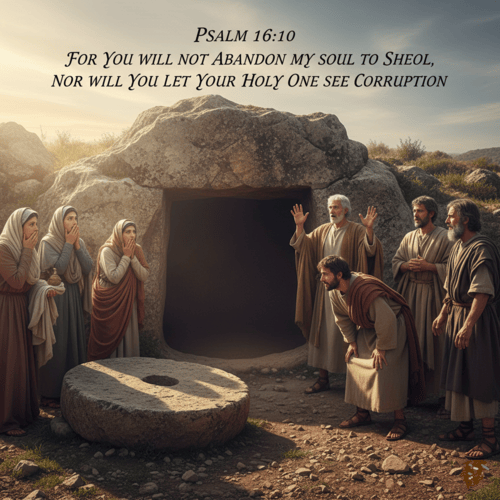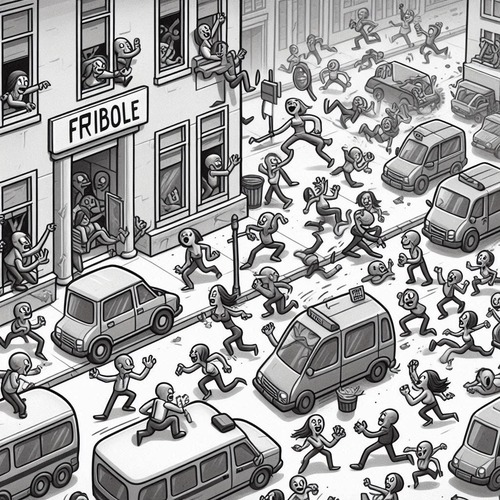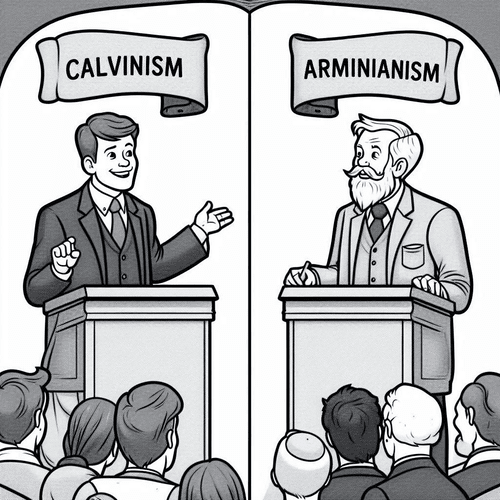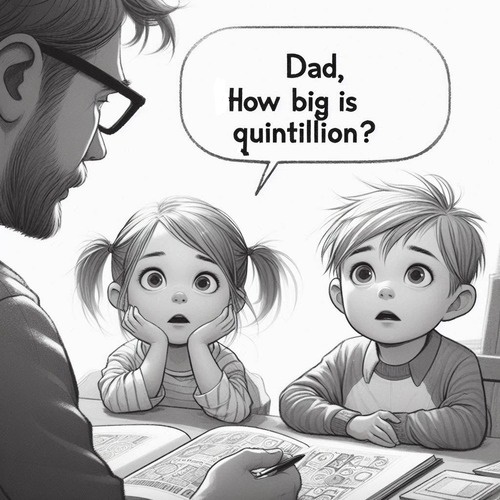Bible Allusions: How They Enrich Our Grasp of God’s Word
Ever experienced that moment when you’re reading Scripture and suddenly recognise an echo of another passage? That spark of recognition is more than just an interesting coincidence—it’s a glimpse into the beautiful interconnectedness of God’s Word. These allusions are one of the richest features of Scripture, inviting us deeper into God’s redemptive story.
THE TAPESTRY OF SCRIPTURE
The Bible isn’t simply a collection of isolated texts; it’s a divinely crafted tapestry where threads of meaning connect across centuries and authors. Allusions—the subtle or direct references from one biblical text to another—reveal a profound unity that points to a single divine Author working through many human writers.
As Paul reminds us, “For whatever was written in former days was written for our instruction” (Romans 15:4). The Reformed tradition has long emphasised Scripture interprets Scripture, and understanding biblical allusions is key to this interpretive approach.
UNDERSTANDING BIBLE ALLUSIONS
Allusions appear in several forms in the Bible:
Direct quotations: When Jesus, tempted in the wilderness, responded with “It is written” and quoted Deuteronomy three times (Matthew 4:1-11), He was explicitly connecting His experience to Israel’s wilderness journey.
Indirect references: When John describes Jesus as “the Lamb of God who takes away the sin of the world” (John 1:29), he’s drawing on rich sacrificial imagery from Exodus, Leviticus, and Isaiah without directly quoting them.
Typological connections: When Paul calls Adam “a type of the one who was to come” (Romans 5:14), he establishes a pattern where one biblical figure prefigures another.
Consider also how Psalm 22 echoes throughout the crucifixion narratives. Jesus cries out, “My God, my God, why have you forsaken me?” (Matthew 27:46)—the opening words of this psalm. Also, the soldiers casting lots for His garments (John 19:24) fulfil Psalm 22:18. These connections aren’t coincidental but reveal how Christ’s suffering was foretold centuries earlier.
To identify Bible allusions, look for:
- Shared vocabulary or distinctive phrasing
- Thematic parallels
- Structural similarities
- Historical or theological connections
THE THEOLOGICAL IMPORTANCE OF BIBLE ALLUSIONS
Divine Unity of Scripture: Bible allusions powerfully demonstrate the unity of Scripture. Despite being written across thousands of years by dozens of authors from different backgrounds, the Bible tells one coherent story. This unity points to its divine inspiration, as Peter reminds us “no prophecy of Scripture comes from someone’s own interpretation” but rather “men spoke from God as they were carried along by the Holy Spirit” (2 Peter 1:20-21).
Progressive Revelation: God’s revelation unfolds gradually throughout Scripture, with later texts often illuminating previous ones. The sacrificial system described in Leviticus finds its full meaning in Christ’s sacrifice, as Hebrews explains: “For it is impossible for the blood of bulls and goats to take away sins” (Hebrews 10:4). Biblical allusions help us trace this development of revelation across Scripture.
Covenant Theology: The Reformed tradition emphasises covenant theology—the understanding that God relates to humanity through a series of covenants that ultimately find fulfillment in Christ. Allusions highlight the continuity between these covenants.
When Jeremiah, for instance, prophesies about a new covenant (Jeremiah 31:31-34) and the author of Hebrews quotes this passage extensively (Hebrews 8:8-12), we see how the New Testament doesn’t abandon but fulfils Old Testament promises.
MAJOR ALLUSION NETWORKS IN SCRIPTURE
- Creation and New Creation: The Bible begins in a garden (Genesis 1-2) and ends in a garden-city (Revelation 21-22). This isn’t coincidental—John deliberately uses creation language to describe the new creation. Both have the tree of life, a river, God’s presence, and human flourishing. Isaiah similarly anticipates “new heavens and a new earth” (Isaiah 65:17) where the curse of sin is reversed.
- Exodus-Redemption: The exodus from Egypt becomes a paradigm for God’s redemptive activity throughout Scripture. Isaiah describes the return from exile as a new exodus (Isaiah 43:16-19). The Gospels portray Jesus as a new Moses—Matthew’s infancy narrative deliberately echoes Moses’s story, with Herod paralleling Pharaoh and Jesus escaping death like Moses did. Jesus’s passing through the waters of baptism, followed by 40 days in the wilderness, follows Israel’s pattern of passing through the Red Sea and spending 40 years in the wilderness.
- David-Messiah: God’s covenant with David (2 Samuel 7) establishes a royal line that finds ultimate fulfillment in Christ. When Gabriel tells Mary that her son will receive “the throne of his father David” (Luke 1:32), he’s drawing on centuries of messianic expectation built through allusions to the Davidic covenant.
- Temple-Christ/Church: Jesus identifies Himself as the true temple when He declares, “Destroy this temple, and in three days I will raise it up” (John 2:19). Later, Paul extends this temple imagery to believers: “Do you not know that you are God’s temple and that God’s Spirit dwells in you?” (1 Corinthians 3:16).
READING SCRIPTURE WITH ALLUSIVE AWARENESS
Deepening Bible Study: When we read with awareness of biblical allusions, our study becomes richer and more rewarding. A good study Bible with cross-references can help you identify these connections. Digital tools like Logos or free resources like BibleHub.com can quickly show you related passages.
Try reading an Old Testament passage and then its New Testament allusions, or vice versa. For example, read Isaiah 53 and then the Passion narratives, noting how Jesus fulfils the role of the Suffering Servant.
Enriching Worship: Understanding biblical allusions transforms how we worship. When we recognize that many psalms point to Christ, our prayer life is enriched. As Jesus explained to the disciples on the road to Emmaus, all Scripture points to Him (Luke 24:27).
Strengthening Faith: The interconnectedness of Scripture through allusions confirms its divine origin. No human authors, separated by centuries and writing independently, could create such a unified narrative with consistent themes and images unless guided by God Himself.
CASE STUDY: THE SUFFERING SERVANT
Isaiah 53 presents one of the most striking examples of Bible allusion. This prophecy of a servant who “was wounded for our transgressions” and “crushed for our iniquities” (Isaiah 53:5) finds fulfillment in Christ’s passion.
The Gospel writers allude to this passage repeatedly:
- “He was numbered with the transgressors” (Isaiah 53:12; Luke 22:37)
- “Like a lamb that is led to the slaughter” (Isaiah 53:7; Acts 8:32)
- “He was assigned a grave with the wicked, and with the rich in his death” (Isaiah 53:9; Matthew 27:57-60)
By recognising these allusions, we gain a deeper understanding of Christ’s atoning work. The suffering servant passage wasn’t merely a prediction but a theological framework that helps us understand why Christ had to suffer.
BIBLE ALLUSIONS: THE SYMPHONY OF SCRIPTURE
Biblical allusions reveal Scripture is more like a symphony than a collection of solos. Each author contributes a unique voice, but together they create a harmonious whole under the direction of the divine Composer.
From a Reformed perspective, this reinforces key doctrines:
- The sovereignty of God in orchestrating redemptive history
- The Christ-centred nature of all Scripture
- The unfolding covenant of grace from Genesis to Revelation
- The perspicuity (clarity) of Scripture as it interprets itself
As we continue reading Scripture, let’s listen for these allusions—the echoes and resonances across the biblical landscape. They invite us into a richer, deeper understanding of God’s Word and the redemptive story it tells.
“And we have the prophetic word more fully confirmed, to which you will do well to pay attention as to a lamp shining in a dark place, until the day dawns and the morning star rises in your hearts” (2 Peter 1:19).
BIBLE ALLUSIONS: RELATED FAQs
How does the theme of blood, sacrifice, and atonement create a web of allusions throughout Scripture? The blood motif begins in Genesis when God clothes Adam and Eve with animal skins, implying the first sacrifice for sin. The thread continues through Abel’s acceptable sacrifice, the Passover lamb’s blood marking the doorposts, the Levitical sacrificial system, and culminates in Christ as “the Lamb of God who takes away the sin of the world” (John 1:29). Hebrews explicitly connects these dots by explaining that “without the shedding of blood there is no forgiveness of sins” (Hebrews 9:22), showing how Christ’s sacrifice fulfils and supersedes all previous blood atonements.
- What’s the significance of the “stone” and “cornerstone” allusions throughout Scripture? The stone imagery begins with Jacob’s stone pillow at Bethel, transitions to the stone tablets of the Law, and develops into prophetic references to a “cornerstone” in Psalms and Isaiah. Jesus directly applies the “cornerstone” prophecy to Himself (Matthew 21:42), and Peter elaborates by calling believers “living stones” being built into a spiritual house (1 Peter 2:4-8). This allusive network reveals how Christ is both the foundation of God’s redemptive plan and the central organising principle around which God’s people are structured.
- How do Bible allusions to “wilderness” reveal God’s redemptive patterns? The wilderness serves as a recurring setting for divine encounter and testing, beginning with Israel’s 40-year journey where God provided manna and water from rock. Elijah’s 40-day wilderness experience, John the Baptist’s wilderness ministry, and Jesus’ 40-day wilderness temptation all deliberately echo this pattern, creating a rich tapestry of allusions. These wilderness narratives reveal how God often uses seasons of isolation and testing to prepare His people for greater purposes, with Christ’s wilderness victory reversing Israel’s wilderness failures.
How does the Bible motif of “marriage” function as an extended allusion? Marriage appears first as the union of Adam and Eve, then develops into a metaphor for God’s covenant relationship with Israel in prophets like Hosea, who portrays Israel as an unfaithful wife whom God continues to love. This marriage allusion expands in the New Testament where Christ is presented as the Bridegroom and the Church as His Bride (Ephesians 5:25-27). The Bible concludes with the marriage supper of the Lamb in Revelation 19:7-9, completing an allusive arc that reveals God’s desire for intimate, covenant relationship with His people.
- What makes the “vine” and “vineyard” allusions particularly significant in understanding Jesus’s ministry? Israel is repeatedly portrayed as God’s vineyard or vine throughout the Old Testament, particularly in Isaiah 5 and Psalm 80, representing God’s special care and expectation of fruitfulness. Jesus deliberately alludes to this tradition when He declares, “I am the true vine” (John 15:1), suggesting that He is the faithful Israel that the nation failed to be. This vine imagery creates a profound allusive connection that demonstrates how Christ fulfils Israel’s vocation and invites believers to find their spiritual nourishment and fruitfulness in Him.
- How do Bible allusions to water reveal the progression of God’s redemptive work? Water allusions flow through Scripture, beginning with creation’s waters, the flood, the Red Sea crossing, and water from rock in the wilderness. The prophets used water imagery for spiritual renewal (Ezekiel 36:25-27), which Jesus then applies to Himself as “living water” (John 4:10) and the source of “rivers of living water” (John 7:38). This water motif culminates in Revelation’s “river of the water of life” (Revelation 22:1), creating an allusive current that traces salvation history from creation to new creation.
How do Bible allusions to “bread” and “eating” enhance our understanding of communion? Bread allusions begin with manna in the wilderness, continue through the Bread of Presence in the tabernacle/temple, and develop in Jesus’ multiplication of loaves. Jesus explicitly connects these threads when He declares, “I am the bread of life,” and “the bread that I will give for the life of the world is my flesh” (John 6:35, 51). When Jesus institutes communion saying, “This is my body,” He’s drawing on this rich allusive history, revealing how the Eucharist embodies the culmination of God’s provision throughout redemptive history.
BIBLE ALLUSIONS: OUR RELATED POSTS
Editor's Pick

Why Do People Hate the Doctrine of Election?
…WHEN THEY REALLY SHOULDN’T Few Bible doctrines provoke stronger reactions than election. The idea that God chose some for salvation [...]

The Doctrine of Providence: Does God Really Govern All Things?
You’re sitting in the doctor’s office when the diagnosis lands like a thunderclap. Your mind races: Why this? Why now? [...]

No Decay, No Defeat: What It Means That Christ’s Body Saw No Corruption
On the Day of Pentecost, Peter stood before thousands and made a startling claim: David's body decayed in the tomb, [...]
SUPPORT US:
Feel the Holy Spirit's gentle nudge to partner with us?
Donate Online:
Account Name: TRUTHS TO DIE FOR FOUNDATION
Account Number: 10243565459
Bank IFSC: IDFB0043391
Bank Name: IDFC FIRST BANK






